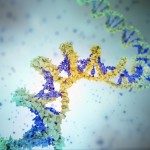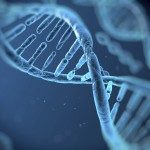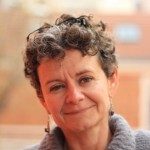Link to Pubmed [PMID] – 19948966
Proc. Natl. Acad. Sci. U.S.A. 2009 Dec;106(50):21258-63
A new class of small RNAs (endo-siRNAs) produced from endogenous double-stranded RNA (dsRNA) precursors was recently shown to mediate transposable element (TE) silencing in the Drosophila soma. These endo-siRNAs might play a role in heterochromatin formation, as has been shown in S. pombe for siRNAs derived from repetitive sequences in chromosome pericentromeres. To address this possibility, we used the viral suppressors of RNA silencing B2 and P19. These proteins normally counteract the RNAi host defense by blocking the biogenesis or activity of virus-derived siRNAs. We hypothesized that both proteins would similarly block endo-siRNA processing or function, thereby revealing the contribution of endo-siRNA to heterochromatin formation. Accordingly, P19 as well as a nuclear form of P19 expressed in Drosophila somatic cells were found to sequester TE-derived siRNAs whereas B2 predominantly bound their longer precursors. Strikingly, B2 or the nuclear form of P19, but not P19, suppressed silencing of heterochromatin gene markers in adult flies, and altered histone H3-K9 methylation as well as chromosomal distribution of histone methyl transferase Su(var)3-9 and Heterochromatin Protein 1 in larvae. Similar effects were observed in dcr2, r2d2, and ago2 mutants. Our findings provide evidence that a nuclear pool of TE-derived endo-siRNAs is involved in heterochromatin formation in somatic tissues in Drosophila.



